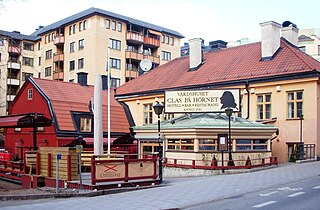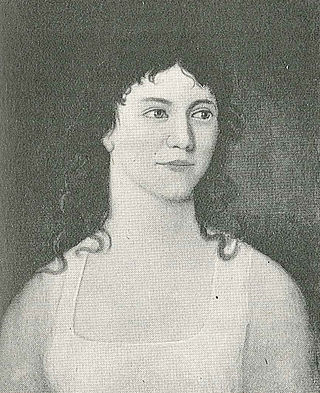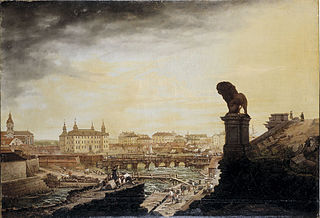| Years in Sweden: | 1736 1737 1738 1739 1740 1741 1742 |
| Centuries: | 17th century · 18th century · 19th century |
| Decades: | 1700s 1710s 1720s 1730s 1740s 1750s 1760s |
| Years: | 1736 1737 1738 1739 1740 1741 1742 |

Events from the year 1739 in Sweden
| Years in Sweden: | 1736 1737 1738 1739 1740 1741 1742 |
| Centuries: | 17th century · 18th century · 19th century |
| Decades: | 1700s 1710s 1720s 1730s 1740s 1750s 1760s |
| Years: | 1736 1737 1738 1739 1740 1741 1742 |

Events from the year 1739 in Sweden
| | This section needs expansion. You can help by adding to it. (June 2015) |

Augusta Lundin was a Swedish fashion designer. She is considered to be the first international Swedish fashion designer as well as the first well known fashion designer in Sweden.

Clas på Hörnet is a hotel and restaurant on Surbrunnsgatan in Vasastan, Stockholm, Sweden, located to the northeast of the Stockholm School of Economics. It was founded by restaurateur Christer von Arnold in 1984. The building itself was originally the Browallshof inn, founded by Clas Browall in 1731. The 18th-century inn is famous in history as it is frequently mentioned in the poetry of Carl Michael Bellman.

Events from the year 1807 in Sweden

Events from the year 1828 in Sweden

Events from the year 1720 in Sweden

Events from the year 1767 in Sweden

Events from the year 1775 in Sweden

Events from the year 1748 in Sweden
Events from the year 1752 in Sweden:

Events from the year 1686 in Sweden

Maria Elisabeth "Maja-Lisa" Borgman, was the owner of a famed coffee house in Stockholm during the reign of Gustav III of Sweden and a known local profile in contemporary Gustavian Stockholm.
Antoinette Wilhelmina Nording (1814-1887), was a Swedish entrepreneur. She founded the famous perfume company Antoinette W Nording, for a time the biggest perfume company in Sweden, in 1847. She can be regarded as the first female perfumer in Sweden, and as a female pioneer.
Brechtgien "Birgitta" Durell, née von Crakow or von Cracauw was a Swedish industrialist.

Barnängens manufaktur, was a textile factory in the Barnängen area in Södermalm in Stockholm in Sweden, active from 1691 until 1826. Alongside its main rival Pauliska manufakturerna, it was the biggest factory in Stockholm during the 18th-century, and during the 1780s, it employed more people than any other business in the city, the majority of whom were women. The factory has been fictionalized in the novel Vävarnas barn by Per Anders Fogelström from 1981.
Förordningen för utvidgad näringsfrihet, also known as 1864 års näringsförordning, was a Swedish law reform introduced 18 Jun 1864. It was law until 1968.
Brita Ryy (1725–1783) was a Swedish educator and member of the Moravian Church.
Maîtresses marchandes lingères was a French guild organisation for women linen draper seamstresses and hemp merchants within the city of Paris, active from the Middle Ages until 1791. It was one of only three guilds open to women in Paris prior to 1776, the other two being the Maitresses bouquetieres and the Maîtresses couturières.
Anna Maria Thalén (1781-1851) was a Swedish fashion trader. She belonged to the leading in her profession in early 19th-century Stockholm and are mentioned in contemporary memoirs and diary literature.

Margareta Nilsdotter also called Margareta Hybertsson was a Swedish businessperson and shipbuilder. In 1627, she completed construction of the Swedish warship Vasa.
Selma Giöbel (1843–1925) was a Swedish artist. She was active as a textile designer, sculptor and engraver, and regarded as one of the most notable Swedish textile designers of the late 19th-century. She was a member of the Friends of Handicraft and co-founded the art firm Svensk Konstslöjdsutställning with Berta Hübner and was its managing director in 1885–1898. She successfully participated in several international art exhibitions.